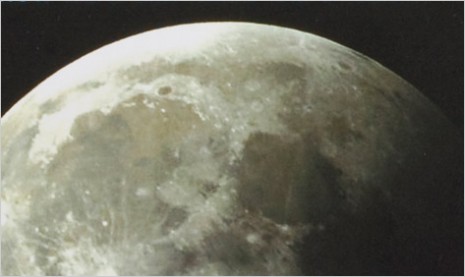
File this one under: Maybe. First off, it strikes me as just a little suspicious that the “scientists” refuse to identify themselves. Most in the scientific field would be calling a press conference and looking for Hollywood agents, so take this news with a grain of salt. Didn’t stop the Daily Mail from publishing it as news, though and maybe it is, time will tell (or else we’ll never hear of it again…):
A group of ‘undersea archaeologists’ have become the latest to claim they have uncovered the lost city of Atlantis. The scientists - who have refused to identify themselves - have released a series of images taken beneath the Caribbean.
They insist the snaps show what appear to be the ruins of a city that could pre-date Egypt’s pyramids, which appeared after 2600BC. They even told a French newspaper that one of the structures appears to be a pyramid.
Now the anonymous group wants to raise funds to explore the secret location where the images were taken.They would not reveal the exact location, however, saying only that it was somewhere in the Caribbean Sea.
The claims have raised eyebrows on the internet, though skeptics refrained from debunking them entirely - just in case.
The legend of Atlantis, a city of astonishing wealth, knowledge and power that sank beneath the ocean waves, has fascinated millions. Time and time again hopes have been raised that the lost city has been found - only for those hopes to be dashed against the evidence (or lack thereof).
Its location—or at least the source of the legend—remained a tantalising mystery. In 1997, Russian scientists claimed to have found Atlantis 100 miles off Land’s End. In 2000 a ruined town was found under 300ft of water off the north coast of Turkey in the Black Sea. The area is thought to have been swamped by a great flood around 5000BC, possibly the floods referred to in the Old Testament.
In 2004 an American architect used sonar to reveal man-made walls a mile deep in the Mediterranean between Cyprus and Syria. In 2007 Swedish researchers claimed the city lay on the Dogger Bank in the North Sea, which was submerged in the Bronze Age. And as recently as February of this year, what appeared to be grid-like lines that resembled city streets were spotted on Google Earth - in the ocean off the coast of Africa.
Sadly Google itself quickly debunked the suggestion, explaining that the lines were left by a boat as it collected data for the application. ‘Bathymetric (sea-floor) data is often collected from boats using sonar to take measurements of the sea-floor,’ a spokesman said. ‘The lines reflect the path of the boat as it gathers the data.’
Posted by Richard Metzger
|
12.17.2009
11:06 pm
|














